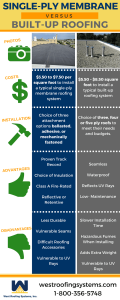Examine The Costs And Advantages Related To Solar Installment To Discover The Financial Chances That Might Be Offered To Those Considering This Renewable Energy Choice
Examine The Costs And Advantages Related To Solar Installment To Discover The Financial Chances That Might Be Offered To Those Considering This Renewable Energy Choice
Blog Article
https://350w-solar-panel21975.blogrenanda.com/36247607/understanding-the-influence-of-climate-problems-on-solar-panel-efficiency-trick-facts-to-take-into-consideration -Oliver Barbee
When thinking about the costs of solar installation, you might wonder about the in advance investment needed and whether it aligns with the prospective long-term advantages. Recognizing the intricacies of these expenditures and the various variables affecting the overall return can shed light on the worth suggestion of transitioning to solar power. By evaluating both the initial arrangement expenses and the forecasted financial savings gradually, you can gain insight into whether the investment in solar setup holds pledge for your economic future.
Preliminary Arrangement Expenses
When thinking about the costs of solar installation, the preliminary setup expenses play an essential duty in your decision-making process. These ahead of time prices consist of the rate of solar panels, inverters, placing equipment, and installation labor.
The rate of solar panels can differ depending on the brand, effectiveness, and dimension you choose. Inverters are essential for converting the sunlight's energy into usable electrical energy and come in various kinds such as string inverters, microinverters, and power optimizers, each with its very own expense ramifications.
Installing devices, such as racks and rails, is required to safely mount solar panels on your roof covering or home.
The setup labor expense covers the specialist installation of the planetary system, guaranteeing that whatever is established correctly and successfully. Find Out More in mind that while these first setup expenses might seem high, there are usually discounts, tax incentives, and funding alternatives available to help offset the costs and make solar installment a lot more cost effective in the future.
Long-Term Cost Savings Analysis
To recognize the financial advantages of solar installment in time, it's essential to conduct a comprehensive long-term cost savings evaluation. While the first configuration expenses of solar panels might appear complicated, the long-lasting savings can surpass these costs dramatically. By harnessing the power of the sunlight to generate power for your home, you can potentially conserve hundreds of dollars on your utility expenses over the life-span of your solar system.
One of the vital aspects to think about in a long-term financial savings evaluation is the reduction in your electricity costs. With photovoltaic panels, you can generate your power, decreasing or even removing your dependence on the grid. This can lead to significant cost savings, especially as energy rates continue to increase.
Additionally, several governments provide incentives such as tax obligation credits and rebates for mounting solar panels, better improving your lasting financial savings. By making the most of these incentives and optimizing your solar power production, you can enjoy considerable economic advantages for many years to come.
Roi Computation
Thinking about the monetary advantages of solar installation, it's time to analyze the Roi (ROI) calculation. Figuring out the ROI includes contrasting the complete expenses of installing a solar system with the monetary benefits it produces over its life-span.
To compute ROI, divide the internet make money from the system by the complete financial investment price and increase by 100 to get a percent. The ROI formula is: (Internet Profit/ Total Amount Investment Price) x 100.
For example, if the total price of installing a solar system is $20,000, and over its lifespan, it generates cost savings and profits totaling $30,000, the net earnings would be $10,000. Dividing this by the total financial investment cost of $20,000 offers a ratio of 0.5. Multiplying this by 100 offers an ROI of 50%.
Normally, a greater ROI indicates a much more financially gratifying investment. Variables like federal government motivations, upkeep prices, and power rate fluctuations can affect the ROI of solar installments. Recognizing the ROI helps in examining whether investing in solar power is worth it over time.
Conclusion
To conclude, recognizing the costs of solar setup is crucial for figuring out if it is worth the investment. By considering first arrangement costs, conducting a long-term savings evaluation, and computing the roi, you can make an informed choice about the financial value of solar energy. With the potential for reduced energy expenses and boosted power independence, purchasing solar setup can be a clever choice for both your purse and the environment.
